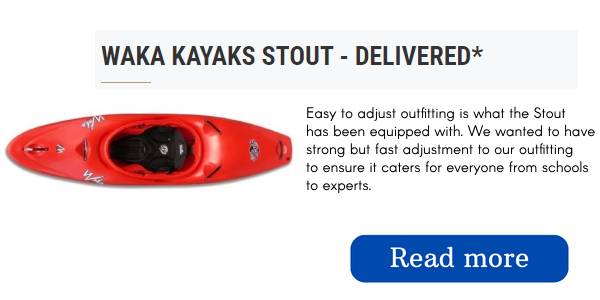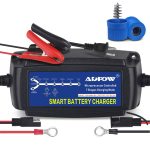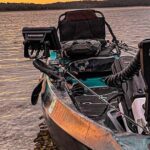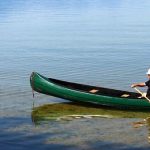In the early days, canoes with gas trolling motors were the “way” to go. And to tell you the truth, battery technology wasn’t what it is today.
Nowadays, electric trolling motors on canoes are the more popular option, but I still smile whenever I see a gas motor on the back of an old squareback aluminum canoe.
Why Mount a Trolling Motor on a Canoe?
A trolling motor installed on a canoe is a self-contained device that can be used to move the vessel forward. This type of angling is specially tailored for trolling, which involves regularly sustaining a certain direction and pace while dragging a lure or bait along behind a vessel.
But wait, we might be getting ahead of ourselves. What is a trolling motor and what are the benefits of mounting one on a canoe?
Two possible reasons for attaching a trolling motor to a canoe are given.
- You want to use your canoe more like a boat to travel, transport passengers and gear, and generally get around the water faster.
- Or the more popular reason, you want to mount a trolling motor on your canoe so you can troll for fish.
Traveling in a canoe while dragging a lure or bait in the water at a depth and speed chosen by the fisher is referred to as trolling in order to catch fish. You do this to make a fish believe that the lure is a swimming prey, so it will pursue the bait and snap it.
You could travel in your canoe the traditional approach by constantly rowing it. Even though it might seem enjoyable to use a pole for a short period of time, it is more convenient to choose a trolling motor for longer periods of trolling in a canoe.
It is less strenuous than using a pole.
So a trolling motor mounted to your canoe will allow you to simply:
- Fish more – Catching fish takes time. A trolling motor on your canoe will keep you fishing longer.
- Paddle less – A canoe trolling motor will save your arms from paddling and wearing out before you have a chance to catch any fish.
More great reasons to put a trolling motor on your canoe:
- Can keep your canoe in one spot in heavy wind, or river or tide current.
- “Up a creek without a paddle?” – A trolling motor on your canoe is a good backup.
- And the number one reason – Trolling … for fish.
Basic Parts of a Canoe – Review
Before discussing where to put a trolling motor on a canoe, it might be advantageous for you to recollect or study the components of a canoe.
In our article on the various components of a canoe, we provide even more information. But, the diagram should help you gain a better understanding of the optimal placements for mounting a trolling motor on a canoe.
Let’s examine the various forms of canoe trolling motors and the main components of each.
Electric vs Gas Trolling Motor
When it comes to canoes, there are really only two options for trolling motors: gasoline or electric. The ultimate outcome of your exploration into the right trolling motor for your canoe will likely simply be based on individual preference, since each option has its own pros.
It is important to recognize the advantages of having either a gas or electric trolling motor attached to a canoe.
Electric Trolling Motor Advantages
Do veteran canoeists ponder the usefulness of electric trolling motors? Actually, today’s electric trolling motors have some great advantages:
- Electric Trolling Motors are Quiet – Electric trolling motors will push your canoe through the water with almost as little noise and water disturbance as you create when you’re paddling it.
Though I’ve never asked any fish, some fishermen swear that an electric trolling motor doesn’t scare away fish like a gas motor will. (Although, literally hundreds-of-thousands if not millions of fish have been caught behind gas trolling motors, so…)
- Electric Trolling Motors are better for the environment – Avoiding a long, heated discussion about how the materials to manufacture large marine batteries are mined from the earth, the actual operation of an electrical engine produces much less polluting materials and discharges less into the water while it’s being run.
- Electric Trolling Motors are Powerful – Modern electric trolling motors come in 12, 12/24, and 36 volt sizes and this gives them plenty of thrust to push even the heaviest canoes through the water.
- Electric Trolling Motors are Light er – Compared to a gas outboard canoe trolling motor, electric trolling motors are relatively lightweight. (It’s the batteries that weigh a lot.)
Gas Canoe Trolling Motor Advantages
I try to be objective, I really do. However, I would much rather have a sturdy, trustworthy, gasoline-powered trolling motor on my canoe… But I’ll get off that topic.
In all seriousness, gas powered trolling motors have some particular advantages you need to know:
- Gas Trolling Motors are Tried and Tested – Small gas engines have been around for a long, long time. Dare I say a hundred years. Modern gas canoe motors do what they’re supposed to do when they’re supposed to do it.
- Gas Trolling Motors Last – Properly maintained, a gas trolling motor will give you years and years of reliable service.
- You can Easily Refuel a Gas Trolling Motor – Unlike a battery-powered electric trolling motor, you can refuel a gas trolling motor pretty quickly. (recharging 1, 2 or 3 12 volt electric batteries takes a while)
- Oh the Power – Comparatively speaking, gas trolling motors are pretty powerful. And though electric and gas canoe motors troll pretty equally, when it’s time to run back to the dock or across the lake to a better fishing spot, you can’t beat a gas engine for zip.
Gas and Electric Trolling Motor Differences
We’ll get specific below, but here are some key differences between gas and electric canoe motors you should consider before making a buying decision:
- Fuel – Stating the obvious, electric canoe motors run off the stored charge in one or several 12 volt batteries connected in series, and gas canoe motors are powered by combusting refined petroleum—gas.
- Power Units – The power of electric canoe motors is measured in pounds (lb) of thrust. And gas motors are measured in horsepower (hp). Which should give you another idea about how long gas engines have been around.
- Weight – Electric trolling motors are light and gas ones are pretty heavy. Now, a 12V battery can weigh between 30-50 pounds, while a 5 Gallon gas can to fuel your gas trolling engine weighs about 35 pounds. Which puts the fuel weight about equal. So weight advantage goes to the electric canoe motor.
- Noise – Hands down, electric motors are much quieter than gas trolling motors. And silently gliding in your trolling canoe through the water on a calm mountain lake is about as zen as fishing gets.
- Price – This is the biggie. Bottom line is that gas trolling motors are significantly more expensive than the most popular electric trolling motors for your canoe. As in 4 to 5 times as expensive.
- Environmental – Now, here’s the wildcard in all of this. There are an increasing number of lakes in North America that are only allowing electric motors and prohibiting gas-powered canoes from operating on them. In that case you have two choices—don’t go on them or buy an electric trolling motor for your canoe.
Benefits of a Trolling Motor on Canoes
Having a trolling motor mounted on your canoe gives you a number of advantages:
- You can (obviously) troll for fish. Trolling is not for everybody (some anglers hate it), but if that’s your thing, a trolling motor lets you do it.
- You can reach your fishing spot faster and with more energy, ready to fish . This is especially useful if you’re out for long days, carrying heavy loads, or would otherwise be paddling into a headwind.
- You can hold your canoe in position once you reach your spot. A bow-mounted trolling motor can act as an anchor and prevent the wind or current from dragging your boat away from your spot. Bow-mounted motors are preferable because they keep the boat directly into the wind, but also stay clear of fishing lines.
Drawbacks to a Trolling Motor
Trolling motors are not inexpensive as is the case with any canoe accessory. In addition to obtaining the motor, you need to get a mount, a battery, and some kind of battery safeguard. This may come with a hefty price tag of hundreds of dollars or more.
They’re not light, either. A full assembly of engine, mount, and battery can be more than 50 pounds in weight. You will require an secure canoe if you are attaching a trolling motor, particularly if you plan to put it on the side of the canoe.
Otherwise, you will need to tilt in the opposite direction to stabilize.
Ultimately, you may experience a sensation of escaping the essential nature of canoeing. This is not really a problem; however, to many people, canoeing is seen as a way to find peace and serenity, while rowing with the paddle.
If using a trolling motor is not your preference, that is alright.
Choosing a Trolling Motor for your Canoe: Features to look for
Thrust
Most trolling motors for canoes are powered by electricity instead of gasoline. The power produced by an electric motor is expressed as pounds of thrust rather than in terms of horsepower. There is no uniformity or consistency in evaluating this thrust, so even motor with the same thrust ranking can be slightly different.
It is improbable that you would require a motor that generates more than 50 to 55 lbs. of pushing power. You could believe that putting greater effort into propelling the canoe will lead to more velocity, but the maximum speed of any canoe is determined by its size, not your strength.
If you generate more than 55 lbs. of thrust, you will not see a large benefit in relation to the extra weight that you will carry.
Voltage and Battery
Electric trolling motors necessitate the purchase of a battery, which is usually more expensive than the motor. Going over the variety of motors, you can notice that there are 12-Volt, 24-Volt, and 36-Volt types available. 12 Volts is all you need for a canoe.
What Battery Do I Need for a Trolling Motor?
It is possible to use a car battery to supply electricity to your trolling motor, however, its duration won’t be very long. Lead-acid car batteries are not intended for ongoing power supply, and are not able to handle being drained to empty. (You can find out more about battery sulfation here .)
The two most efficient routes are a deep cycle lead-acid battery (although it is weighed down due to its lead) or a more costly yet lighter lithium phosphate battery.
You should aim to have a minimum of 50 Amp-hours of capacity. If you plan to be out on the water for extended periods of time, you should opt for a minimum of 100 Ah or more.
It’s essential to be aware that a 55 pound electric motor has the capacity to draw around 50 Amps when running at full speed, in which case a 50 Amp hour battery will only power it for up to an hour (or less if it’s a car battery).
Shaft Length
For the optimum performance of your system, your propeller should be placed 10-12 inches below the water surface. This ensures sufficient room from any underwater obstructions and allows for efficient movement. Determine how far it is from the stern of your canoe to the surface of the water to make certain that the engine will be adequately submerged.
Weight
The total weight of your canoeing equipment is increased by the addition of your trolling motor. This indicates that the number of people and their gear has to be taken into account when assessing your capability. Do not exceed 70% of the maximum carrying capacity of your canoe for the best results.
If you do not possess a canoe with a square-shaped rear end, the motor mount will keep your trolling motor away from the center. You need to be careful not to put too much weight in your canoe, as it can disturb its balance.
You may need to shift your bodyweight around to ensure your canoe doesn’t become unbalanced. If you’re opting to attach the motor to the side of your vehicle, selecting a lighter weight model will make your journey smoother and easier.
Saltwater vs. Freshwater
Do you prefer to fish in lakes or do you take your rod out in the ocean? Engines that are operated in saltwater are more susceptible to corrosion than those operating in freshwater, thus they require greater protection against it.
Buying a marine engine typically costs more and adds more weight, so it may be a good idea to go with a freshwater engine if that is what you are accustomed to.




